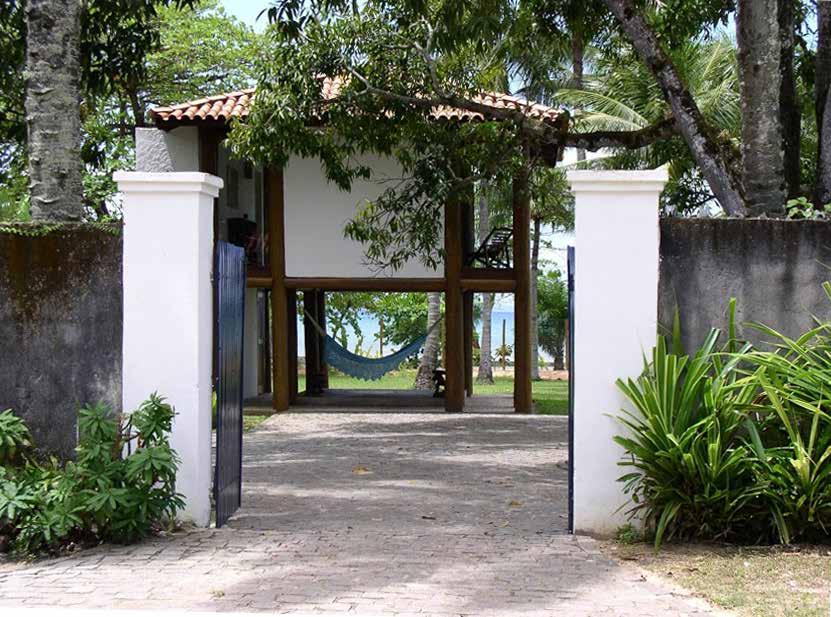
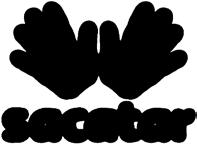

YEAR ENDING DECEMBER 2018
Photo by Taylor Van Horne 2016
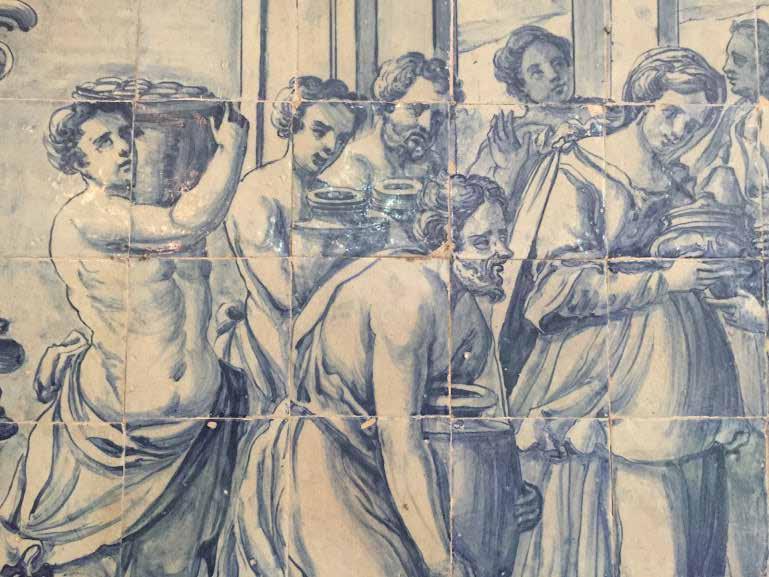
2 SACATAR 2017
18th century Portuguese tiles. Photo by Taylor Van Horne 2017
KEEP THE JUJU GOING FOR YOURSELF AND OTHERS!
Tis a place like none other, where you can fly from your muddle to land in the middle of influence protean and profound. There lies an other worldly culture, compelling, flamboyant and hidden on that I-land of curious breezes, beckoning waters, and the wile’d lives of flora and fauna at your deck and crawl. Horses stroll in the surf amidst the heartbeat of drums and the sun beams at your progress.
Work wasn’t always easy but it was never hard with inadvertent inspiration from the fecund surrounds, a casual conversation or an unexpected collaboration.
Sacatar provides an exultation of senses and sensibilities that can lead you happily astray.
It is a place of wander, an I’ll of Possibilities constructed for artists far from home.
Nonetheless it is a vision precarious to maintain so far out to see.
For those of us who know its astounding magic firsthand, we can actively participate in its future.
Keep the juju going, for yourself, and for others.
PAT OLESZKO, New York performance artist extraordinaire (Sacatar Fellow, 2008 & 2016)
https://www.paypal.com/cgi-bin/webscr?cmd=_s-xclick&hosted_button_id=R6GS6XPSZFCTC
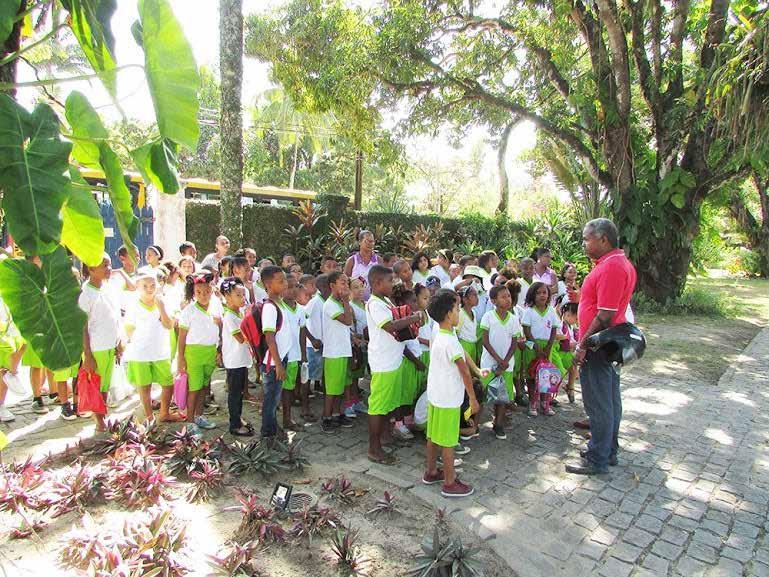
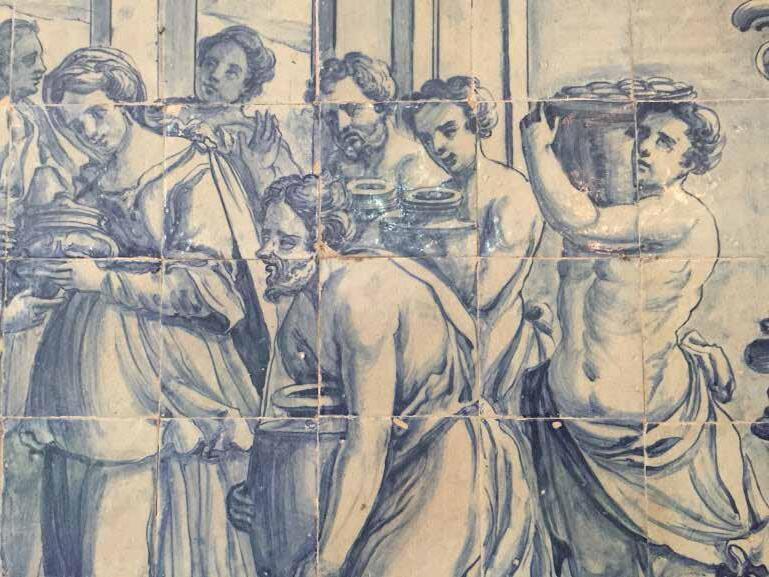
Sacatar is a portal.
Isa Trigo Salvador, Bahia, Brazil -- 2018
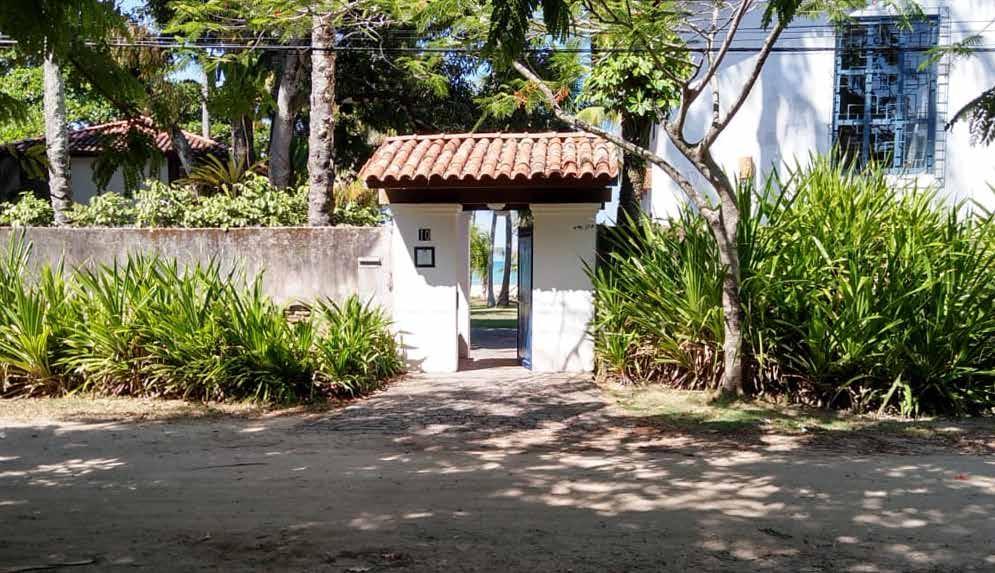
Of the 45 countries I’ve traveled to, this may be the best door I’ve had the privilege to walk through as an artist!
Precious Lovell Raleigh, North Carolina, USA -- 2017
CONTENTS 2 5 6 7 10 12 29 30 31 32 Keep the Juju Going Mission Artists From Around the World Statements from the Founders Program Highlights Artists in Residence Community Partnerships & Engagement Sacatar Solo Financials and Partners Board of Directors
DT Soluções 2017 4 SACATAR 2018
Drone image by
“Rua da Alegria 10” Photo by Taylor Van Horne 2018
OUR MISSION IS...

• To provide residencies for seasoned and emerging artists to create new work;
• To promote cross-cultural interaction and collaboration among the participating artists and the local communities;
• To support artists in the creation of work that inspires across class and national boundaries;
• To encourage art that returns us to where art began – to a wordless silence and a sense of wonder before all creation.
SACATAR 2018 5
Photo by Marcelo Thomaz 2018
ARTISTS FROM AROUND THE WORLD
The Sacatar Foundation, created in the year 2000, supports and promotes the international artist residency program of the Instituto Sacatar, founded a year later in 2001. The Instituto occupies a stunning beachside property on the island of Itaparica, across the Bay of All Saints from the colonial capital of Brazil and Brazil’s third largest city, Salvador da Bahia. Sacatar’s facilities can currently host six artists at one time and we typically schedule four eight-week sessions annually. Since 2001, we are grateful to have partnered with twenty-four institutions and organizations to provide residency opportunities for 122 artists. These Fellowships typically have restrictions by discipline, age and/or nationality. Through our Open Call, we have received thousands of applications from artists with no restrictions, open to artists of all ages, nationalities and disciplines. We have provided residencies to 230 artists through our own selection process, or about 3-5% of all applications received. In addition, we have invited 11 artists and have hosted 29 artists who have returned for second Sacatar Fellowships.
We have hosted artists as young as 21 and as old as 84. The average age of the Sacatar Fellow is 40.
We are very proud to be a thoroughly international residency, intentionally bringing together artists from all around the world. We try to host at least one Brazilian artist in each residency group, since this helps ‘anchor’ the artists in the local culture, another aspect that we work closely with the artists to achieve. As of December 2018, we have hosted 392 artists from 66 countries, as follows:
We also seek to have a rich cross-section of artistic disciplines. Here is the breakdown by discipline:
Brazil 87 artists / 22%
North America
125 artists / 31%
Europe 57 artists / 15%
Australia/Asia 39 artists / 10%
Africa 30 artists / 8%
Russia and Eastern Europe 22 artists / 6%
Latin America (not Brazil) 21 artists / 5%
Middle East 10 artists / 3%
Visual Arts in general
155 artists / 39%
Literature – English 53 artists / 14%
Literature – Portuguese 14 artists / 4%
Literature – other languages 11 artists / 3%
Music Composition 42 artists / 11%
Photography 33 artists / 8%
Film/Video 32 artists / 8%
Dance / Choreography 26 artists / 7%
Theater/Performance/Circus 20 artists / 5%
Other Creative Acts 6 artists / 1%
In 2018, we hosted 24 artists from eleven countries, including our first artist from Sudan, the filmmaker Ahmad Mahmoud, as part of an effort to bring artists to Sacatar who have been prohibited from traveling to the United States.
6 SACATAR 2018
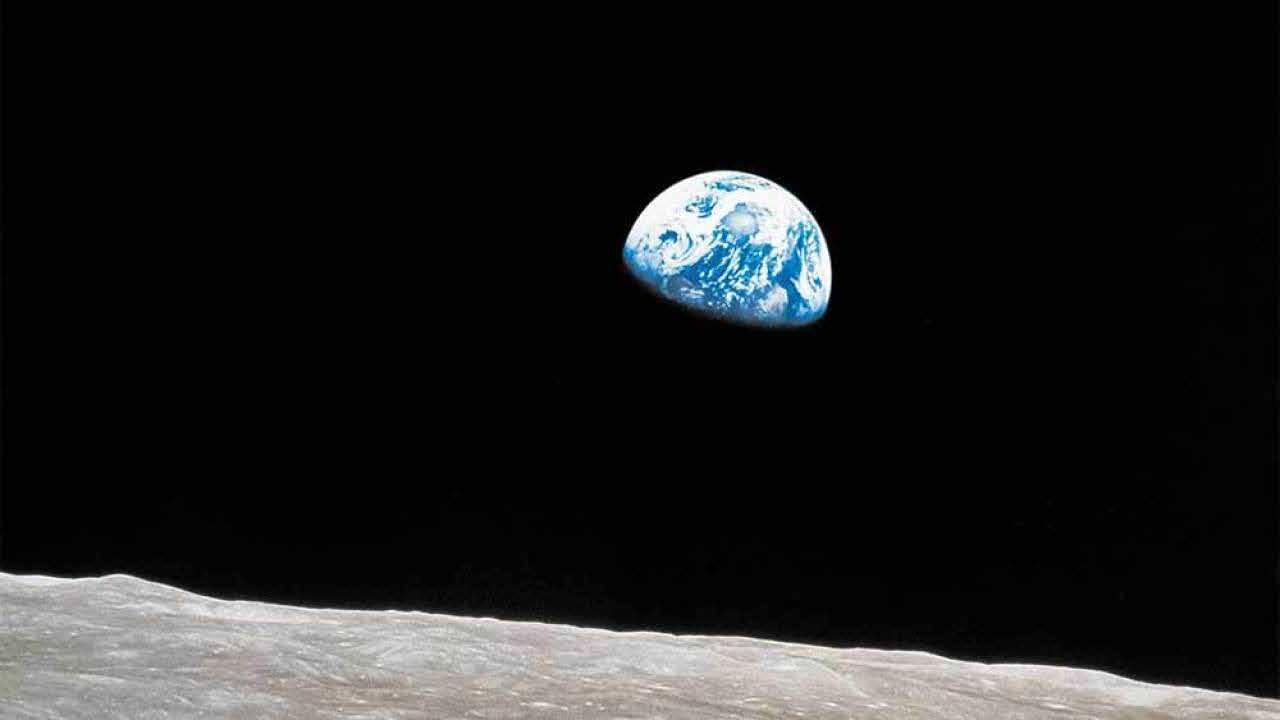
SACATAR 2018 7 Google Images
STATEMENTS FROM THE FOUNDERS
Photography was not yet 150 years old when this image was captured and shared with all earth’s inhabitants. For the first time we saw our planet from the moon. This image, more so than words, communicates that we occupy a mote that astronomers agree spins at the edge of just one of billions of galaxies. Our home is this tiny blue dot. Over the 50 years since this photo was taken, we have forgotten or ignored its impact.
We must resist those who weaponize social media to disseminate misinformation, disinformation and outright lies, in order to pit sect against sect, community against community, ‘us’ against ‘them,’ operating under their conviction that “Hate is more powerful than love.” We must work powerfully to bring together us inhabitants of the planet to forge a new vision for our shared future.
Our mission at Sacatar is to bring together the greatest diversity possible of creators and thinkers, to share their vision through local interaction and to draw inspiration from the extraordinary vivacity of Bahia. I urge you to read the moving and inspiring statements from our 2018 Fellows in the following pages that testify to the unique power of Bahia.
In 2019 we will celebrate several new partnerships to assist us in achieving this renewed vision:
• We will host a Swiss artist within the frame of the South American programme “Coincidencia” of the Swiss Arts Council Pro Helvetia: https://prohelvetia.ch/en/
• Sacatar will be one of three sites to host recipients of the residency prize, Prêmio FOCO Bradesco ArtRio, in association with ArtRio, the international Art Fair of Rio de Janeiro: http://artrio.art.br/premio-foco
• We are working with L’Atelier des Artistes en Exil, an organization based in Paris, France, that works with refugee artists. In 2019, we intend to host our first artist from Afghanistan as part of our effort to provide opportunities for artists whom the Trump administration blocks from entering the United States.
• We have established an exchange of former Fellows with the Djerassi Resident Artists Program in Woodside, California. We will assist Djerassi in its intention to increase international engagement by nominating South American artists for residencies there. We in turn will host artists nominated by Djerassi: http://djerassi.org/
For seventeen years, we reimbursed the cost of airfare, so that no artist would have to decline a Fellowship for lack of funds. Facing budget shortfalls, we will unfortunately suspend this largesse (8% of our budget) starting in 2019. Please consider a generous donation – financial, or in kind flight miles -- so that we can continue to provide exceptional opportunities for the people who will light our way forward.
https://www.paypal.com/cgi-bin/webscr?cmd=_s-xclick&hosted_button_id=R6GS6XPSZFCTC
This photograph re-emerges on its fiftieth anniversary to challenge us. Will artists be able to articulate a compelling vision for the future, or do we truly face an apocalypse? I continue to believe that the Instituto Sacatar and similar residency programs around the world provide the environment where a comprehensive and illuminating vision can take form. I currently only see turbid confusion as artists struggle to articulate the complexities we face, but if not artists, who?
Taylor Van Horne Executive Director Instituto Sacatar
8 SACATAR 2018
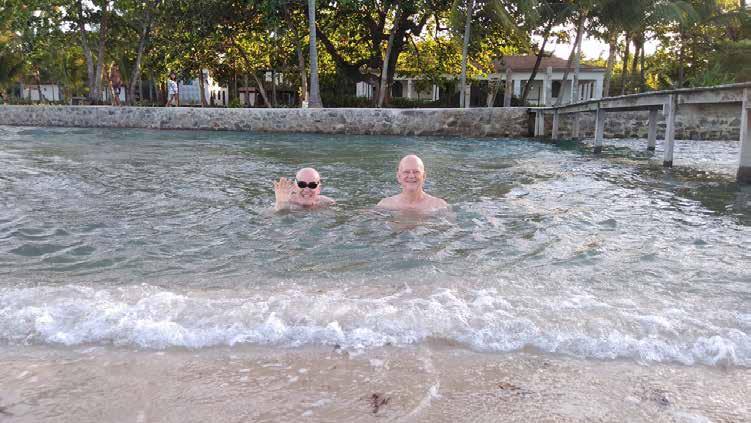
During my recent visit to the Instituto Sacatar, I participated in three well-celebrated festivals – the Festa do Bonfim in Salvador, the Festa dos Caboclos in Itaparica, and the Festa de Yemanja in Amoreiras, a neighboring coastal village on the island. Before I step out into such crowds in Bahia, I am prepared to be paranoid about tripping on an absent cobblestone and already fearful of the sidewalk barbecues (churrascos) or stands of acaraje (deep-fried black-eyed pea patties.). In the midst of intense celebrations, I often think, “Jeez, these Baianos sure take risks! Am I the only one
here afraid of falling onto hot charcoals or into sizzling oil?”
Hmmnn... I will try to answer my question from another perspective.
Well, is there anything at all that anyone does that is not, in some sense, a risk?
We all know that a decision to focus on artistic practice is a risky one. The decision to live and work in a new culture, among a group of unfamiliar personalities, demonstrates a willingness to confront and welcome the unknown. In this regard, all
Sacatar Fellows are serious risk-takers. Each of them has follow-up stories and anecdotes to share that demonstrate this.
Because our ongoing cross-cultural operations involve, by now, some routine procedures developed over the past 19 years, it actually takes me awhile to suddenly admit to myself, “Hey, but we that founded this artists’ residency program in Bahia took a huge gamble as well, didn’t we? And don’t we continue to take daily risks in our program that is co-dependent with the culture and economy of Bahia, the energy and commitment of board members and employees, and the unpredictable spirit of each artist that becomes part of our global family?”
We will continue to take risks in the year 2019. Even with established routines, each year is an exciting one. Appreciate programs that take risks, and consider a donation to Sacatar.
Mitch Loch President Sacatar Foundation
SACATAR 2018 9
Photo by Charles Silva, 2019
PROGRAM HIGHLIGHTS OF 2018
In 2018, we hosted twenty-four artists from eleven countries on five continents. You can read about the artists’ individual experiences on the following pages. For the fifth consecutive year, we celebrated a partnership with the state cultural agency FUNCEB -- the Fundação Cultural do Estado da Bahia -- to bring local writers to Sacatar. These local artists significantly enrich the experiences of the international artists in residence, some of whom know little or nothing about the rich diasporic culture of Bahia, Brazil. This year’s laureate was Tatiele Silva: fundacaocultural.ba.gov.br
For the eighth consecutive year, we partnered with Africa Centre to bring highly qualified artists from across Africa. This year’s laureate was the South African musician/composer Cara Stacey: africacentre.net
We also partnered for the first time with the People’s Palace Project in London, with funding through the British Council . This partnership awarded a residency to the British author Victoria Bulley: peoplespalaceprojects.org.uk
We extend our gratitude to these institutional partners. We hosted six former Fellows, each returning for a second residency. Among the six was Uruguayan/Dutch photographer Diana Blok, who returned fifteen years after her first residency in 2003. We held an Open Call for artists of all nationalities, ages and disciplines. Over a brief six-week period we received 310 applications from fifty-nine countries. Forty pre-screeners around the world recommended forty-four artists to a Final Selection Committee. This committee, comprised of five arts professionals of diverse backgrounds, recommended twenty-three artists from fourteen
countries for the 2019-2020 Fellowships to Sacatar.
Through a special residency for a single artist or group we call Sacatar Solo , we hosted the ground-breaking band Baiana System in August. The band revolutionized the sound of Carnaval in Bahia, uniting the traditional inventive guitar improvisations of the ‘guitarra baiana’ with elements of electronic house music. They premiered their new compositions at the Festa do Caboclo in January 2019 in Itaparica, the annual celebration of the pivotal role the community of Itaparica played in expelling the Portuguese from Brazil on January 7, 1823.
We continue to seek mutually beneficial institutional partnerships around the world.
Please contact us at info@sacatar.org if you have an interest in becoming a Sacatar partner.
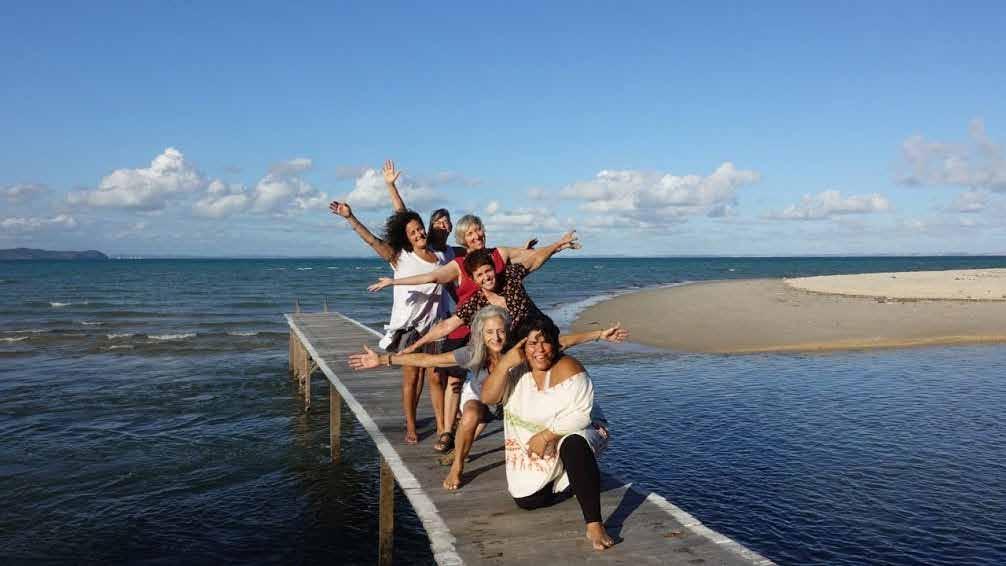
10 SACATAR 2018
PROGRAM HIGHLIGHTS OF 2018
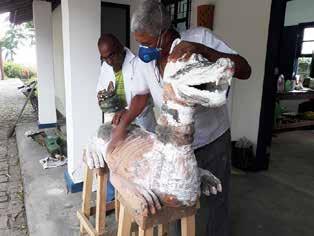

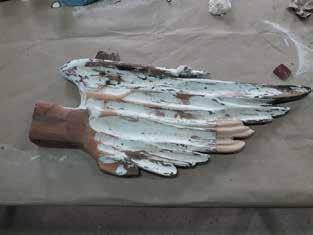
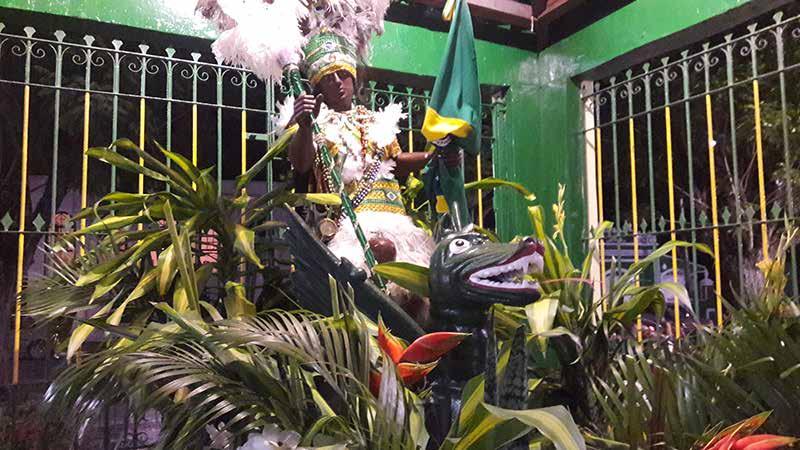
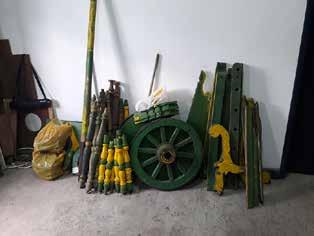

In December we lent our woodworking shop to IPAC, the Instituto do Patrimônio Artístico e Cultural do Estado da Bahia, whose artisans restored the cart that the torch-carrying citizens of Itaparica drag through the nocturnal streets of Itaparica every January 6-9 in celebration of the expulsion of the Portuguese in 1823.
SACATAR 2018 11
Photos by Marcelo Thomaz 2018

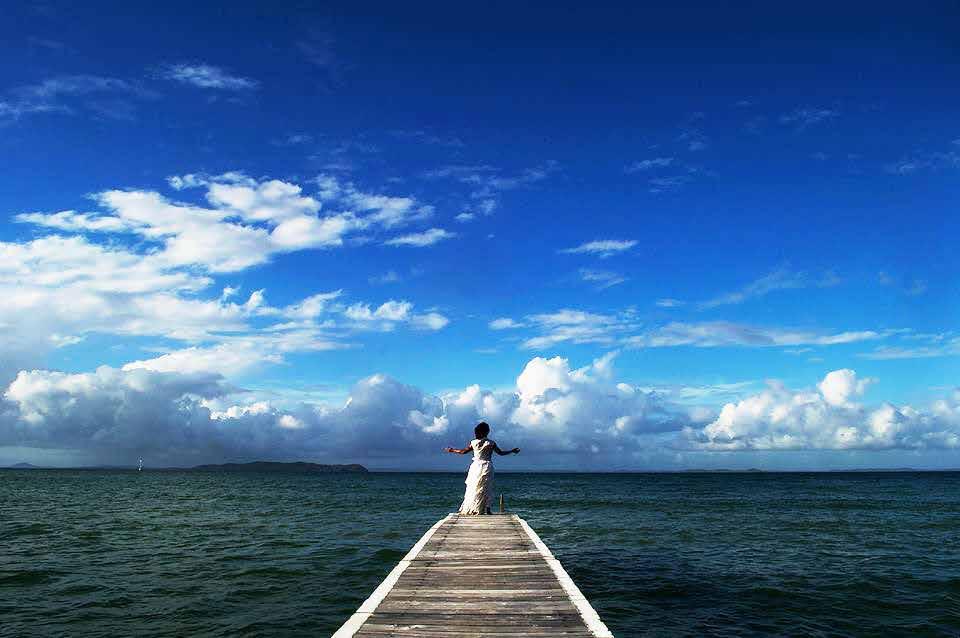
12
2018
August
Sacatar resident artists -
2018
Photo by Marcelo Thomaz
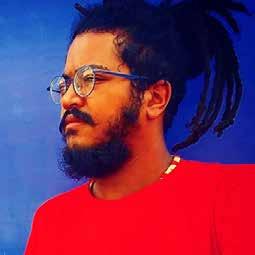
Ahmad Mahmoud
Video / Photography
Shandi, Sudan
Invited Artist
I accomplished a great deal of writing for my documentary “Tasteless Music,” which I was invited to develop further at the American Film Showcase in South Africa at the end of May. I applied for this workshop while in Bahia and was accepted. Sadly, it is also the reason I have to leave sooner than planned as I need to apply for a visa from my home country. Realizing the similarities between candomblé and Zâr traditions in Sudan was astonishing. I will be studying this further this year.

Alexandra Pechman
Literature
Los Angeles, California, USA
Sacatar Open Call
I had very ambitious plans for my residency, namely, writing a 10,000-word essay on the work and life of Lina Bo Bardi to anchor a potential book proposal… I found her work up close so arresting and all-consuming, and Salvador is such a fascinating place. I was grateful for two interviews set up by Sacatar. I would not have been able to write this piece anywhere else. And my studio was beautiful, too – I could spend all day and night there easily.

It’s hard to imagine what could possibly make this place more beautiful. It is stunning, down to the last detail.
Alexandra Pechman USA -- 2018
SACATAR 2018 13
Photo by Taylor Van Horne 2019

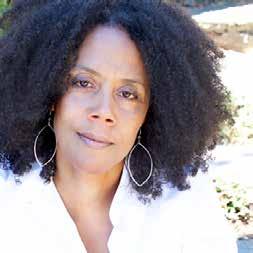
Once arriving here, I became deeply moved by the legend of the Venceslau Reserve and that the river which once provided healing waters there is presently inactive. This set me on another path to study the source of this stagnancy and to research the rivers of this island, and more importantly, it propelled me to deepen my own inquiry, and activation of the ritual aspect of my performance work. The end result was actually a beginning: I am now focusing my work on a long term ritual healing of the waters and environment of the Island of
Itaparíca. This is a long term project that I will continue to focus on beyond my time here at Sacatar. It will involve a continuation of cultivating relationships with people of the island and a deepening of understanding the politics of Itaparica, and moving forward with the question of how Itaparíca could potentially become a site for ecological sustainability. It is a grand proposal, I am clear of that. But it also represents a commitment for me as a performing artist to potentially deepen the impact of the ritual performance work I do.
14 SACATAR 2018
Amara Tabor-Smith Dance / Performance Seattle, Washington, USA Sacatar Open Call
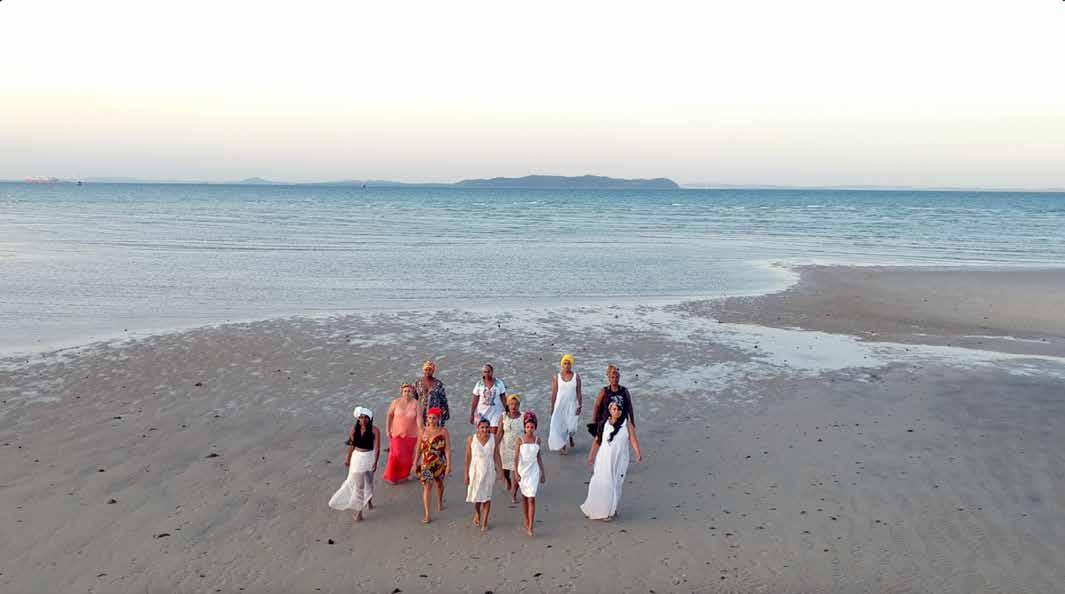
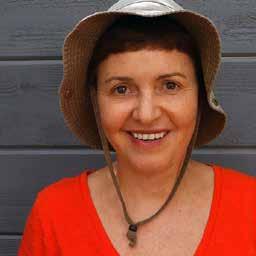
I came here expecting to do a video project in collaboration with the community, and I am happy that I was able to accomplish it. My project definitely changed due to my experiences here. At the library I saw a beautiful painting about Maria Felipa made by Rik Freeman, a previous Sacatar resident (2011). This lead me to the book by historian Eny Kleyde where I learned about her importance in fighting for Brazil and Bahia’s independence-something that surprisingly as a Brazilian I didn’t know before. I also learned that she lived right here where Sacatar is located, which is believed to be Praia do Convento. This fact furthered my interest in her and in this location. My experience in Bahia and Sacatar had a great impact in the content of the work, not only through Maria Felipa but in how her story resonates today in black women’s struggles. Therefore, the video pays an homage to all black women past and present who continue to fight for their independence.
SACATAR 2018 15
Bia Gayotto Video Brazil > USA Invited Artist Drone image by Bia Gayotto 2018
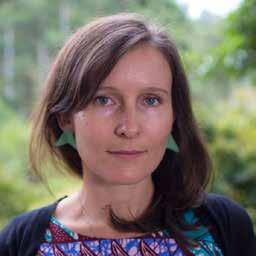

South
In partnership with Africa Centre
I made many soundscape recordings (some overnight), including that of the incredible dawn chorus here at Sacatar. I started three found sound compositions using these bird calls, sounds recorded at the sea’s edge and recordings of the drums here which I hope to finish once I am back at home.
Being at Sacatar forced me to rest and regroup and this is probably the most important personal result of me being here. I feel renewed and revived. I have caught up on so many artistic projects which were dragging. I put two albums in motion. I wrote songs and sang every day and learned a new instrument. A lot was achieved.
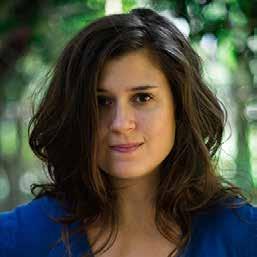
I intended to collect details of the landscape for my novel that I began in 2016, to write poems and to engage in some literary activity with the people who live on the island. I did all of that. It was great to return to Sacatar. I was blown away the first time by so much life and beauty.
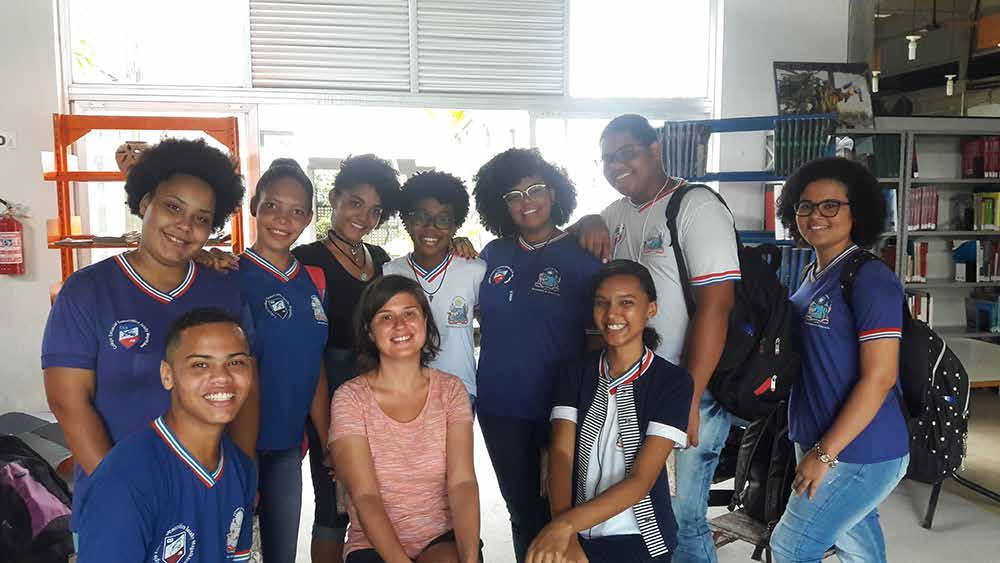
16 SACATAR 2018
Cara Stacey Music
Africa
Carol Rodrigues Literature Brazil
Sacatar Returning Fellow
Photos by Marcelo Thomaz 2018
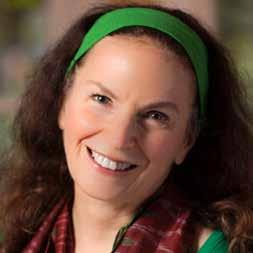
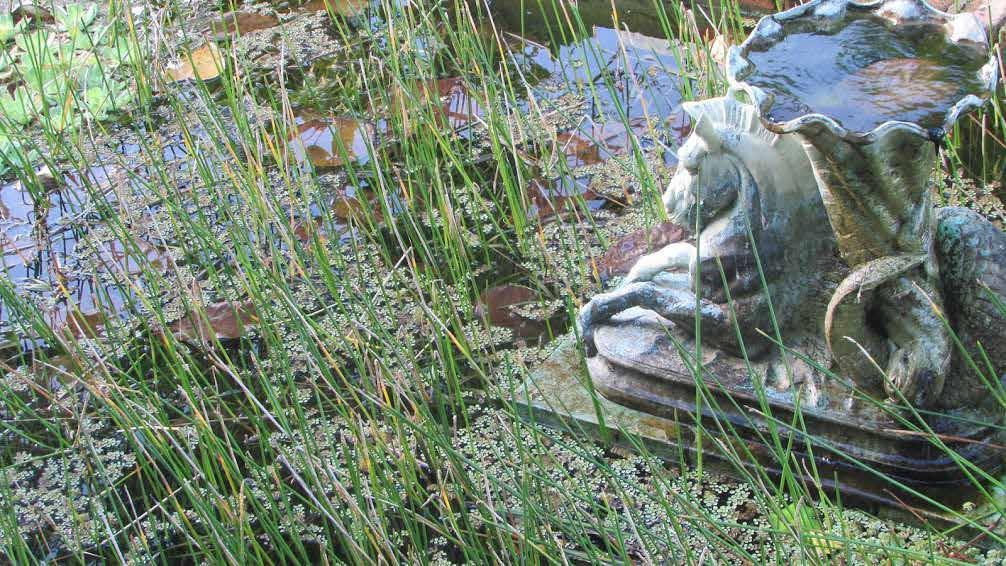
USA
Literature
Sacatar Open Call
It became clear that daily life and culture on Itaparica would be very absorbing, particularly with the Festas Juninas, the visits to the Egunguns and other terreiros, a few classes of capoeira, and all the wonderful opportunities to explore aspects of other fellows’ projects and make short trips with them. So all of that deeply Bahian life became part of my life here, as well as inspiration for writing, and the chance to enter into life here on its own terms has been one of the most gratifying fulfilled parts of this residency, and it will continue to be a source of inspiration.
Errância: Late Afternoon
Their footprints lead away from the brick kiln past storage urns of pummeled, thumb-pressed clay waiting in darkness for the potter. Their tracks stray across the cobbled patio and studio garden where the tortoise family feeds on mango pulp and overripe papaya round a terracotta plate.
They move through the palm grove’s fallen coconuts and into shade of the wide, whitewashed veranda where they kick off flip-flops and unfasten sandal straps. Bare-soled and empty-handed, they let themselves out through the heavy grille-work gate, over dune grass and onto the narrow, plank-work pier that crosses
the tidal stream. At the pier’s end, their naked feet press into the ladder’s splintered rungs. They let go and drop to the sand, where the praia extends a mile at low tide into the Bay of All Saints. Sun declining in the tropic sky, how far to wander, they ask themselves, as evening shorebirds fly low over the tide’s returning swell and night mists gather?
—Carolyne Wright
This is the first collaborative project arising from my June-August 2018 residency at the Instituto Sacatar. Follow the link for the narrative and poem in Portuguese.
https://carolynewright.wordpress.com/collaborations/
SACATAR 2018 17
Carolyne Wright


My plan was to do research for a new composition, the Nossa Senhora Suite. I wanted to primarily meet women who are devotees of various Nossa Senhoras and interview them. I did do this, though I’d have liked to do a few more interviews. I met some local musicians and gave a workshop at UFBA (Universidade Federal da Bahia). I kept getting invited to music events in the city, and was sometimes frustrated that I couldn’t take advantage of the city’s proximity because travel there and back in one day was too much for me. I’ve made the first steps in a bunch of new relationships here and feel good about that.
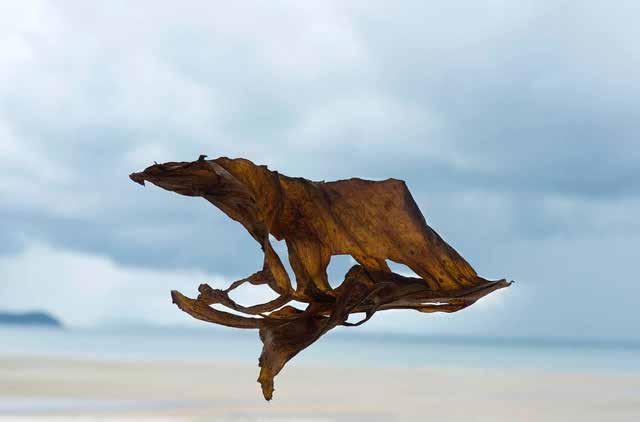
The project I realized could not have happened elsewhere else. It was unique to the place and time…I developed a very special body of work which was inspired by an interesting combination of elements: the studio I was delegated: Studio Mar, the shapes of the leaves and branches fallen from the trees, plants in our direct surroundings, and my state of mind… it is work which surprised and challenged me as an artist, it expanded my own limitations. It did not concern gender issues, nor people, nor directly political views. Now that I am beginning the process of editing, I realize how it is also related to the spiritual life of Bahia, the Orixas, the power of nature and transformation and my own inner state of being….I (also) did work with two transformations for my project Adventures in Cross-Casting which is an ongoing project. The new aspect of this experience at Sacatar is that I worked with non actors which in both cases chose female characters from the mythology of Bahia.
18 SACATAR 2018
Deanna Witkowski
USA Music Sacatar Open Call
Diana Blok Uruguay > Netherlands Photography / Visual Arts Sacatar Returning Artist
“Orixas”. Photo by Diana Blok 2018
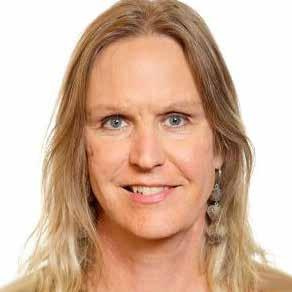
Erica Connerney
USA
Literature
Invited Artist
I came to Sacatar to write a novel best described as a work of transsexual horror and completed it at breakneck speed while watching the tide roll in and roll out in the Bay of All Saints. It was my first trip to Brazil and I fell in love with the country, the people, the music, the food, and the weather. I learned to play the guitar--sort of--and also how to make myself misunderstood in Portuguese. I was able to meet some of my sisters in the Brazilian trans community and this experience, as well as witnessing egun ceremonies, inspired me further, adding to the book in surprising ways. And, of course, I spent some time on the beach and explored Salvador. The experience of being at Sacatar was life-changing and I will never forget it.
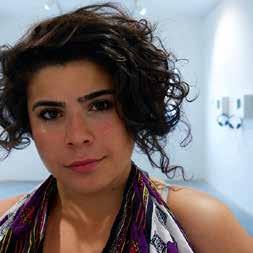
Estabrak Al-Ansari
Iran > Oman
Photography / Visual Arts
Sacatar Open Call
Plan: Initial plan was to create a series of underwater images, or at least begin a series. Although I wondered if two months was a long enough period to accomplish much, the challenge was to see what could happen and how it could happen being on foreign grounds and in a space where I would not be able to speak the language. What an incredible space of inspiration! Bahia as a whole has so much inspiration within it, from places to its people and for what I have been interested in, regarding my underwater work, it is the perfect space to start research for it.

“Lembrar” by Estabrak Al-Ansari 2018 @rough_silk
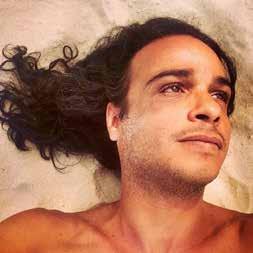
I took photos of the workers on the island of Itaparica in their places of employment. I followed through on this objective and used this ‘excuse’ to approach these people and to take these beautiful photos. The experience on the island strengthened by work through the goodwill of the people I met. And as a final present I was invited to present the results of this work in a big mural in the city during FITA, the Festival of Poetry and Music of Itaparica, in November.
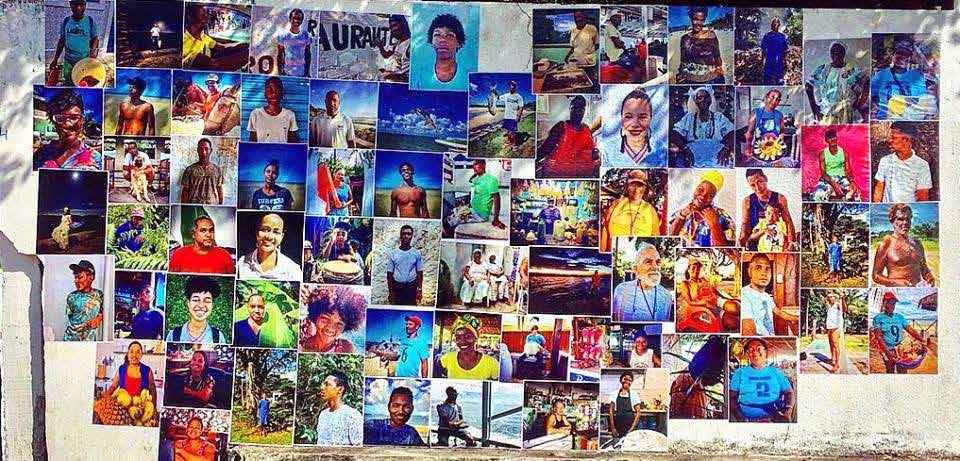
20 SACATAR 2018
Fabio Duarte Brazil Visual Arts Sacatar Returning Artist
“Trabalhadores de Itaparica”.
Photo by Fabio Duarte 2018
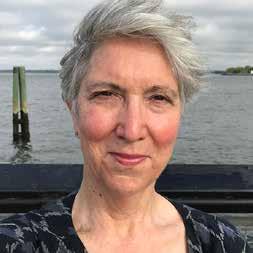
The project: “As Águas do Futuro na boca da Bahia” came together along with several other approaches to water through watercolors and woodcuts with water-based printing by hand, using the ancient Japanese technique mokuhanga. It revealed itself in layers I could not have imagined. I worked onsite mornings at the Biblioteca (the local public library) with a table set up asking the question: What is the color of the water of the future? There are about 150 responses from the community during my residency. I hand printed 3 scroll prints (36 prints/responses each) from the answers to the questions and will continue to print the series. This project started at Sacatar, will continue in New York and beyond. Four prints from the series “Árvores para Áqua” and
a “As Áquas do Futuro” scroll (36 prints) are now at a gallery in São Paulo, Gravura Brasileira and there is talk of an exhibition of this work and a continuation of the project in 2020. The support, embrace and beauty that is Sacatar and beyond will never be forgotten.
Qual é a cor da água do futuro?

SACATAR 2018 21
Florence Neal
USA
Visual Arts
Sacatar Open Call
Photos by Florence Neal 2018
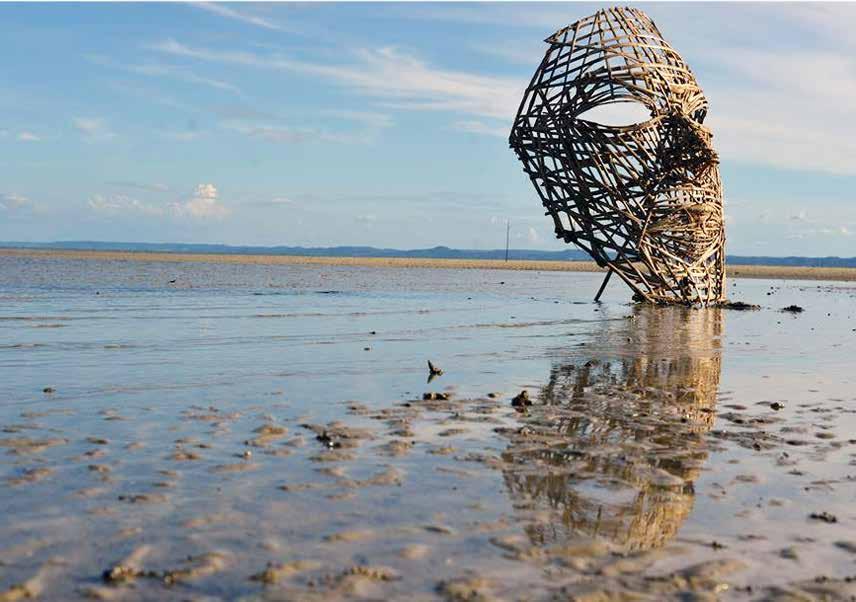
Fred Martin France Visual Arts Sacatar Returning Artist
My goal during this residency -- spending time in the village of Maragogipinho in order to observe and learn their techniques to prepare clay, and of course sharing mine with them -- was fully accomplished. I was welcomed into the Polaka family’s olaria during one week and became a member of their family. I also met Bruna Gidi, an art student and performer after the presentation of my work at the ceramics laboratgory of the Escola de Belas Artes, UFBA (Universidade Federal da Bahia) in Salvador. We decided to collaborate and experiment through performances using clay as a medium of metamorphosis, once in her studio called Zona Fluxus (Porto da Barra, Salvador) and twice in the olaria in Mocambo (a neighborhood of Itaparica). I also built a giant mask made of bamboo during the last two weeks of the residency. During the residency, I really immersed myself with the locals and the Bahia way of living.
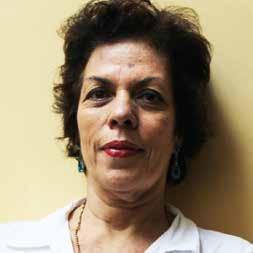
Isa Trigo Brazil Literature Invited
Artist
The nature of my proposal was the production of a text for theater and a short video piece, but I produced far more than I initially intended. Sacatar is a place conducive to creative production. Through its environment, but mostly because of how the employees deal with people and their demands. It's perfect. Sacatar is a sine qua non for the works produced there. Sacatar is an invaluable gift for us Bahian and Brazilian artists.
22 SACATAR 2018
Photo by Fred Martin 2018 @artinfred
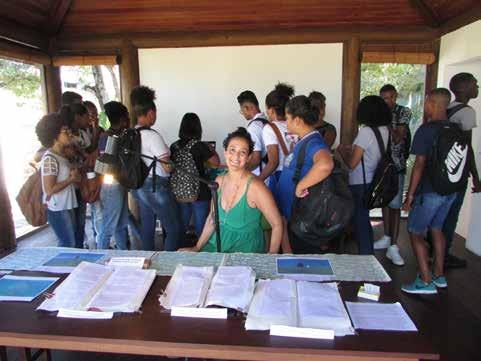
Sacatar Open Call
Sacatar has been the space I would not have let myself have otherwise. I have been running since the fall of 2016. Running to do anything I can to support the change that we need to see in our country. Running as an artist, as a leader in my field, and as an educator. I would never have taken this time to recognize how far I have come. I needed this space to value my WORK over my WORKING. I have not known what exactly would come of the roller coaster I have been on for the past 6.5 years and then for the past 2 years – but here with the ocean air and the constant encouragement of Sacatar and my colleagues I have found permission I did not know I had.
“Sensing the Tides after the Wall falls”
A wall fell on me six and a half years ago. This is not a symbolic wall, but a 17-foot, 4-foot wide and 4-foot deep metal/wooden structural wall. I was in the empty audience seating of a reputable theater directing a production for a powerful university. I stood, raised my hand, and yelled for my college student to get out of the way of the falling wall. She moved, I was crushed to concrete.
One of my closest friends said “I know there is not much I can say. But I know you. And I know that you will be ok. The thing is that your ok tomorrow is going to be different than your ok today. And your ok after that will be different again.” I see now that this ok-ness he described is like changing with the tide.
In the first weeks of my arrival in Bahia, I was introduced to the idea that this is the “land of what-was.” There was a water-spring plant, there was a textile plant, there was an oil rig factory, there was, there was. I traveled to São Roque do Paraguaçu, a disused coastal village abandoned by government carelessness…I smelled burnt blood on orixas’ shrines, layered from past ceremonies.
I have been considering the land of what-was in relationship to the vast IS I have experienced here. There IS such generosity. There IS such spirit. There IS such mystery. There IS such openness. There IS such history. There IS such pain. There IS such beauty…
My task at Sacatar has been to write. I usually make events. Things. Here I write. I write about the tools to make artistic experiences that bring people together and I write about the healing process of invisible pain…
I am so grateful to this place and the humanity shared… It is here I have been able to listen to the value of my work, over the value of my working. I have considered my own “what-was” and written it alongside my own what IS. Here, it is impossible to avoid the lessons of the tidal shifts…
In my life, each low and high tide is a phase of my learning. In my healing I have fought the swells until my body was tired and aching. I have floated into realizations that have been buoyant gifts. No tide is the same. Some are faster, slower, violent, calm. Some cover a powerful undercurrent waiting to pull me under. Some push me to shore with salt water burning my throat and a surprising smile on my face. For my reader, I define the Wall. Capital W, as the tragedy in your life that suddenly changed what-was. My Wall happened to be an actual one. The words I write are not the path to what-was. They are not meant to instruct. They are my own swimming lessons for what IS.
All Best,
Mikhael Tara Garver
SACATAR 2018 23
Mikhael Tara Garver USA Performance
Photo by Marcelo Thomaz 2018
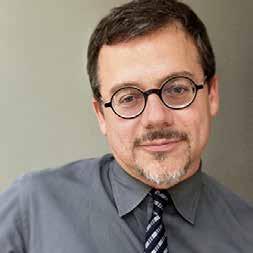
Paul Roth
USA>Canada Curating Sacatar
Returning Artist
My project this year was twofold: on the one hand I wanted to complete my work on the project I began last year, GORDON PARKS: THE FLÁVIO STORY. The exhibition opens September 12 in Toronto…My second goal was to begin work on my next project related to Gordon Parks and Brazil: a retrospective exhibition for Instituto Moreira Salles in São Paulo and Rio de Janeiro,
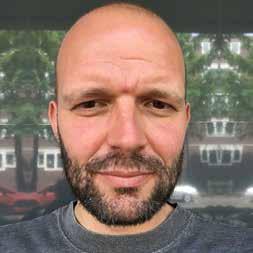
Pieter Paul Pothoven
Netherlands Visual
Arts
Sacatar Returning Artist
I researched the Dutch colonial past on Itaparica, with a focus on a structure that might have been a Dutch building in the neighborhood of Mocambo. I also researched various other locations, like the ruin of the first steam-driven sugar factory. I met incredible people along the way that made this residency, apart from a few setbacks, a success. I did a lot of theoretical
which I will co-organize with Sérgio Burgi (curator of photography at the Instituto Moreira Salles in Rio de Janeiro)…My stay at Sacatar gave me the time and the peace I needed to complete one project and begin the next. Once again this year,…being at Sacatar and on Itaparica allowed me to connect to others who energized me, and to be in a place that inspired me and helped me better understand the country that is integral to my projects. Sacatar has been—and will continue to be—critical to my engagement with Brazilian culture.
research about Dutch colonization of Brazil in general and Itaparica in particular, and about slavery and the resistance against it. I somehow had the hope that I could finish a work, but now I realize I just made another step in a long process. I will be back! I think my two stays at Sacatar served as necessary refueling periods in order to move on in a new refigured way. Both times it radically changed things in ways I didn't anticipate. I believe that if I would have worked with tunnel vision to finish artworks, I would have missed this extraordinary experience, which, in the long run, is much more profound and productive.
24 SACATAR 2018
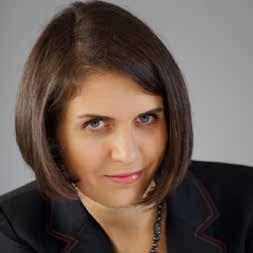
Raminta Serksnyte
Lithuania
Music
Sacatar Returning Artist
Since I came to Sacatar the second time, my project was intentionally related with the wonderful nature of Bahia. The main idea of my newest piece was meditation and silence. The serenity and beauty of Itaparica was the ideal environment to compose music for piano solo, under working title “Meditation”. I also made some sketches for my large-scale Piano Concerto, on which I will work the next years.

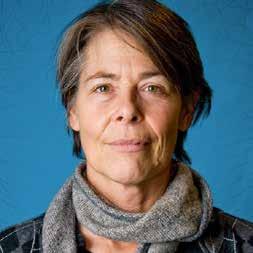
Sara Roberts USA
Sculpture & Installation Art
Invited Artist
My plan was to explore the plant-life of Itaparica and further my practice of mending plant material. I found amazing plant-life here! Not only plants but the culture of candomblé and its intimate connection with plants, ceremonial + medical, was a rich source of inspiration.
SACATAR 2018 25
Detail of “Green Mariô”Sara Roberts 2018
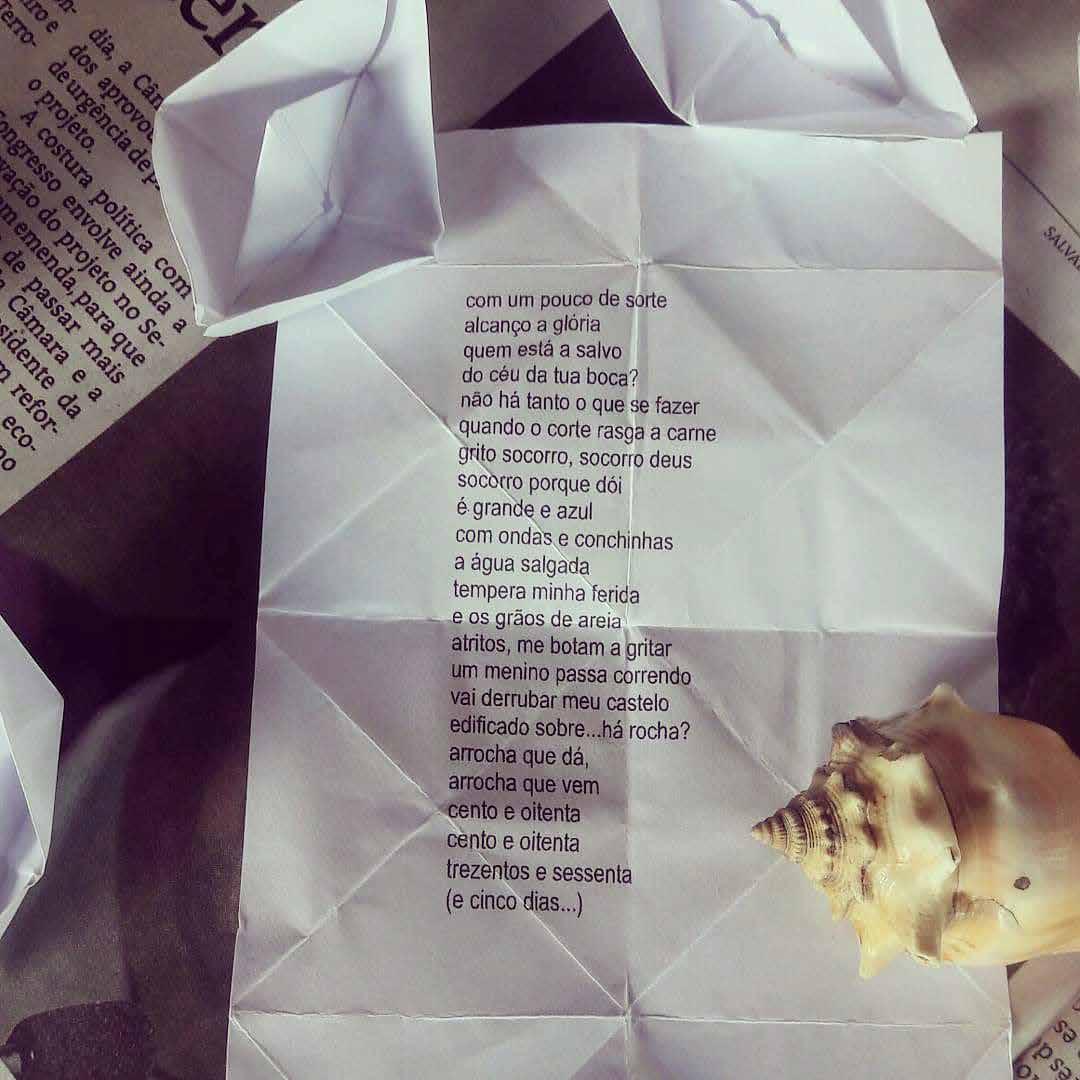
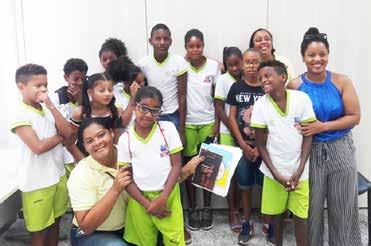
Literature
2018 FUNCEB Selection Winner
The environment is very conducive to research and, in my case, the library inspired me. I read many books of Brazilian literature during my residency. This was fundamental to my research and writing. My book will be published in March 2019 and I hope to maintain ties to Sacatar so that we can do a book launch and, who knows, maybe an international exchange as a result of this project.
26 SACATAR 2018
Tatiele de Souza Silva Brazil
Photos by Marcelo Thomaz 2018

Literature / Performance
Invited Artist
Bahia was the point of departure for a fictional diary I wrote during the residency. To think of the Brazilian sea, the Bahian sea and its changes, these were among the influences that drove my work. The experience of an artist residency is characterized by the opportunity to meet people different than those you usually interact with or to experience places you do not normally frequent. This is what makes the experience significant.
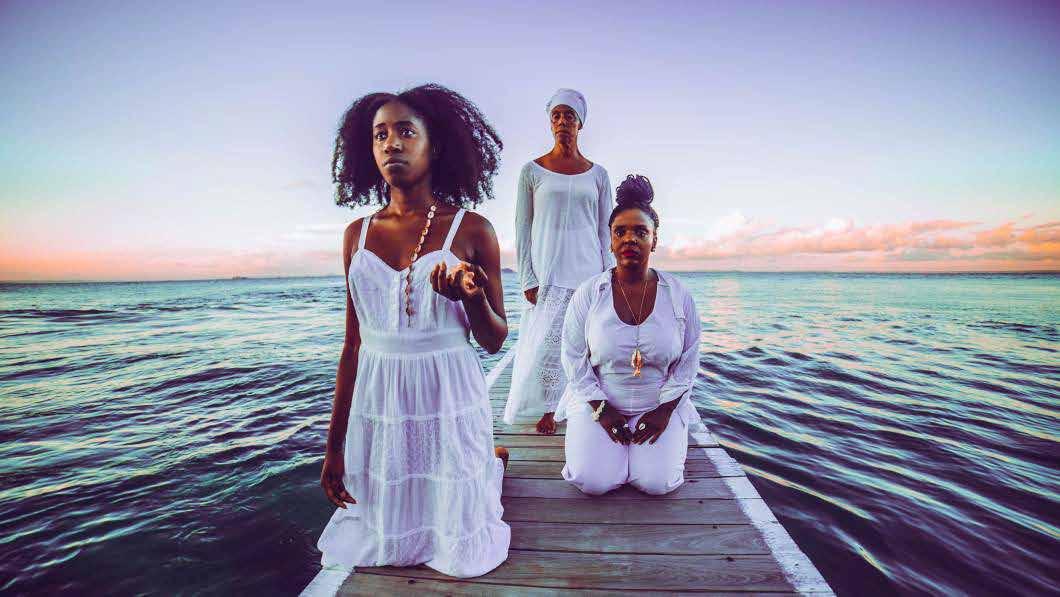
Nós somos filhas das águas!
Mamãe sempre me diz que quem tem cabeça de água faz coisas importantes pro mundo. Porque ninguém controla a água, ela é vida. E faz nascer de novo o novo.
Nós somos feitas de água.
Minha cabeça é de águas e dentro de mim mora um rio.
SACATAR 2018 27
Val Souza Brazil
Victoria Bulley, Amara Smith and Val Souza
Photo by Ahmad Mahmoud 2018 @instagrahmad
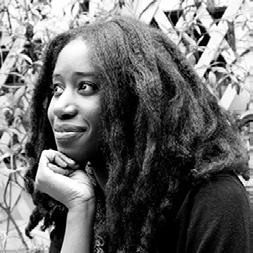
Victoria Bulley
UK Literature
In partnership with British Council Brasil and People’s Palace Projects
Bahia had a great effect on the work I was intending to do – and will continue to for coming months. I had a very clear line of research with regard to my ancestral lineage that runs through Bahia, but I was also interested generally in the history and cultural realities of African heritage in Brazil. I was richly blessed to be in the company of such wonderful other Fellows who were also interested in this heritage. My work became focused around writing and more abstract filmmaking, and I was able to make a draft of a film-poem that I will continue to edit after the residency. I’m still in awe of the experience and almost can’t believe such a beautiful space for artists exists. I’ll hope that one day I can be back!
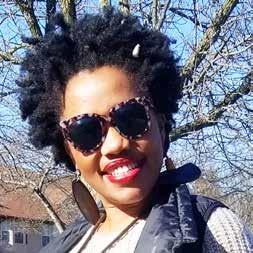
Victoria-idongesit Udondian Nigeria>USA
Visual Arts / Performance
Sacatar Open Call
I was interested in the Afro-Brazilian culture. Having access through Sacatar networks to attend Afro-Brazilian religious ceremonies was intriguing for me. The irony is the fact that I came from Africa to experience Africa first hand in Bahia in ways I have not back in Nigeria. I also had an opportunity to visit the female penitentiary. All these experiences have impacted me a lot and of course, two months wasn’t enough time to digest and respond to them all in ways I would deem fit. However, this could mark the
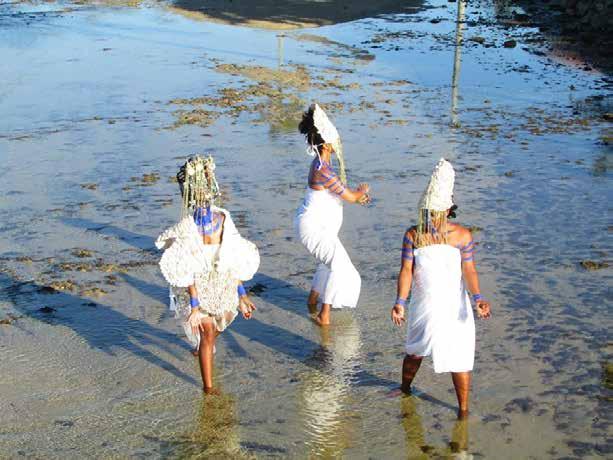
28 SACATAR 2018
Photo by Marcelo Thomaz 2018
COMMUNITY PARTNERSHIPS / COMMUNITY ENGAGEMENT
We want to thank the following local organizations with whom Sacatar artists collaborated in 2018:
· Colegio Estadual Democrático Jutahy Magalhães / Itaparica
· Escola de Belas Artes, Universidade Federal da Bahia / Salvador
· Escola de Música, Universidade Federal da Bahia / Salvador
· Festa Literária do Pelourinho / Salvador
· Festival de Itaparica Música e Poesia / Itaparica
· Biblioteca Juracy Magaglhães, Itaparica, Bahia
Local public events featuring Sacatar Fellows in 2018:
· Apr 21 - Sacatar at Jam no Mam at the Museum of Modern Art with Deanna Witkowski
· Apr 26-27 - Arts Rights Justice Laboratory at Goethe Institut Salvador
· May 18 - 1ª Semana da Diversidade da Ilha de Itaparica with Amara Tabor Smith in Mar Grande
· May 22-24 - Poetry Workshop by Carol Rodrigues at Itaparica Public Library
· May 25 - Piano Workshop by Deanna Witkowski at UFBA - Universidade Federal da Bahia
· May 28 - Sacatar Open Studio Day at Sacatar
· Jun 18 - Conversas com Sacatar Public Presentation at Goethe Institut Salvador
· Jul 3 - VIII Mostra de Performance with Fabio Duarte at EBA - Escola de Belas Artes da UFBA
· Aug 3 - Sacatar Open Studio Day at Sacatar
· Aug 9 - Sacatar at Festa Literária Internacional do Pelourinho FLIPELÔ
· Aug 30 - Conversas com Sacatar Public Presentation at EBA - Escola de Belas Artes UFBA
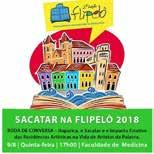
· Institut Goethe / Salvador
· Municipality of Itaparica
· Municipality of Vera Cruz
· JAM no MAM / Salvador
· Zona Fluxus / Salvador
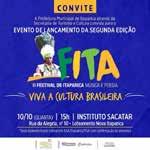
· Aug/Sep - Mokuhanga Workshop by Florence Neal at Itaparica Public Library
· Oct 10 - Sacatar Open Studio Day at Sacatar
· Nov 1 - Conversas com Sacatar Public Presentation with Fred Martin at EBA - Escola de Belas Artes UFBA
· Nov 3 - Collective Poetry Workshop by Tatah Café during FITA - Festival de Itaparica Música e Poesia
· Nov 4 - Installation Work by Fabio Duarte during FITAFestival de Itaparica Música e Poesia
· Nov 24 - Jam no Mam at the Museum of Modern Art with Cara Stacey in Salvador
· Dec 13 - Sacatar at Ciclo de Música Contemporânea with Cara Stacey in Salvador
· Dec 13 - Sacatar at Zona Fluxus with Fred Martin in Salvador
· Dec 14 - Sacatar Open Studio Day at Sacatar
· Jan 7, 2019 - Sacatar Solo Band Baiana System concert at the Festa do Caboclo in Itaparica

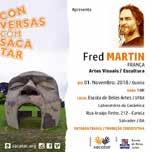


SACATAR SOLO 2018
The Instituto Sacatar is pleased to present the band Baiana System as its latest participant in the Sacatar Solo program, held in August 2018. This curatorial residency project takes place once a year and includes renowned artists invited to work at the Institute's headquarters on the island of Itaparica. It is yet another initiative to promote art and creation in the seaside environment surrounded by tranquility and inspiration.
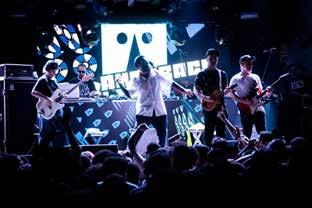
30 SACATAR 2018
Photos by @baianasystem
STATEMENT OF FINANCIAL ACTIVITIES PARTNERS
We thank the following institutions and organizations that have co-sponsored artists' Fellowships during our first eighteen years:











IN BRASIL
ArtRio Feira de Arte do Rio de Janeiro
Bienal da Bahia / Museu de Arte Moderna da Bahia
Bienal do Recôncavo / Fundação Dannemann
Bienal Mercosul




Staff Salaries
Utilities
Office Expenses
Direct Program Expenses: Groceries
Direct Program Expenses: Travel
Property Maintenance and Improvements
Insurance/Accounting/Communications
Bank Fees
Payroll And Property Taxes TOTAL












Centro Cultural São Paulo
Centro Universitário Belas Artes / SP-Arte
EAV-Parque Lage
Fundação Cultural do Estado da Bahia
Ministério da Cultura do Brasil
Prêmio PIPA - Brazil
Rumos Itaú Cultural
Secretaria da Cultura da Bahia
VideoBrasil - Brasil
Acervo da Laje
IN EUROPE
People's Palace Project / UK
British Council
Pro-Helvetia / Switzerland
Culture France
UNESCO / Aschberg
Ateliers des Artistes en Exil
IN NORTH AMERICA
Dance-UP / Pennsylvania
Los Angeles Cultural Affairs / California
Djerassi Resident Atists Program / California
La Chambre Blanche / Quebec
IN ASIA
Korean Traditional Performing Arts
National Art Studios Korea
Taipei Artist Village / Taiwan
AND IN THE REST OF THE WORLD
Africa Centre / South Africa
Winzavod Contemporary Art Center / Russia
South Project / Australia
SACATAR 2018 31
SACATAR FOUNDATION INCOME Endowment $125,000 48% Application Fees $7,250 3% Donations $130,000 4 9% TOTAL $262,250 100% SACATAR FOUNDATION EXPENSES Direct Instituto Funding $220,000 84% Program Expenses in USA $2,500 1% Administration $38,150 15% TOTAL $260,650 100% INSTITUTO SACATAR INCOME Funding from Sacatar Foundation $220,000 98% Funding from Institutional Partners $5,000 2% TOTAL $225,000 100% INSTITUTO SACATAR EXPENSES (IN USD$)
46% 5% 5% 6% 7% 5% 10% 1% 15% 100% $94,000 $10,500 $10,250 $12,500 $16,200 $9,800 $20,500 $1,800 $29,250 $204,800
BOARD OF DIRECTORS
FOUNDERS
Taylor Van Horne and Mitch Loch

BOARD OF DIRECTORS INSTITUTO SACATAR
Taylor Van Horne, Sabrina Gledhill, Sergio Guedes, Giovana Dantas, Tom Correia, Maristela Ribeiro, Alex Simões, Lica Moniz and Calmon Teixeira
BOARD OF DIRECTORS SACATAR FOUNDATION
Mitch Loch, Helen Miller and Taylor Van Horne
ADVISORY BOARD INSTITUTO SACATAR
Cristina Castro, Dinha Ferrero, José Araripe, José
Henrique Barreto, Karina Rabinovitz, Liane
Heckert, Luciana Moniz, Luciany Aparecida, Luiz
Cláudio Campos, Marcelo Hoog de Sá, Marielson
Carvalho and Nirlyn Seijas
STAFF INSTITUTO SACATAR
Augusto Albuquerque (Administrative Manager), Dete Vieira, Lavínia Santos, Charles Silva, Raimundo da Silva, Anderson Gomes, Antônio Barbosa, Reginaldo Roque and Francisco Galvão.
32 SACATAR 2018
Photo by Nele Azevedo 2013
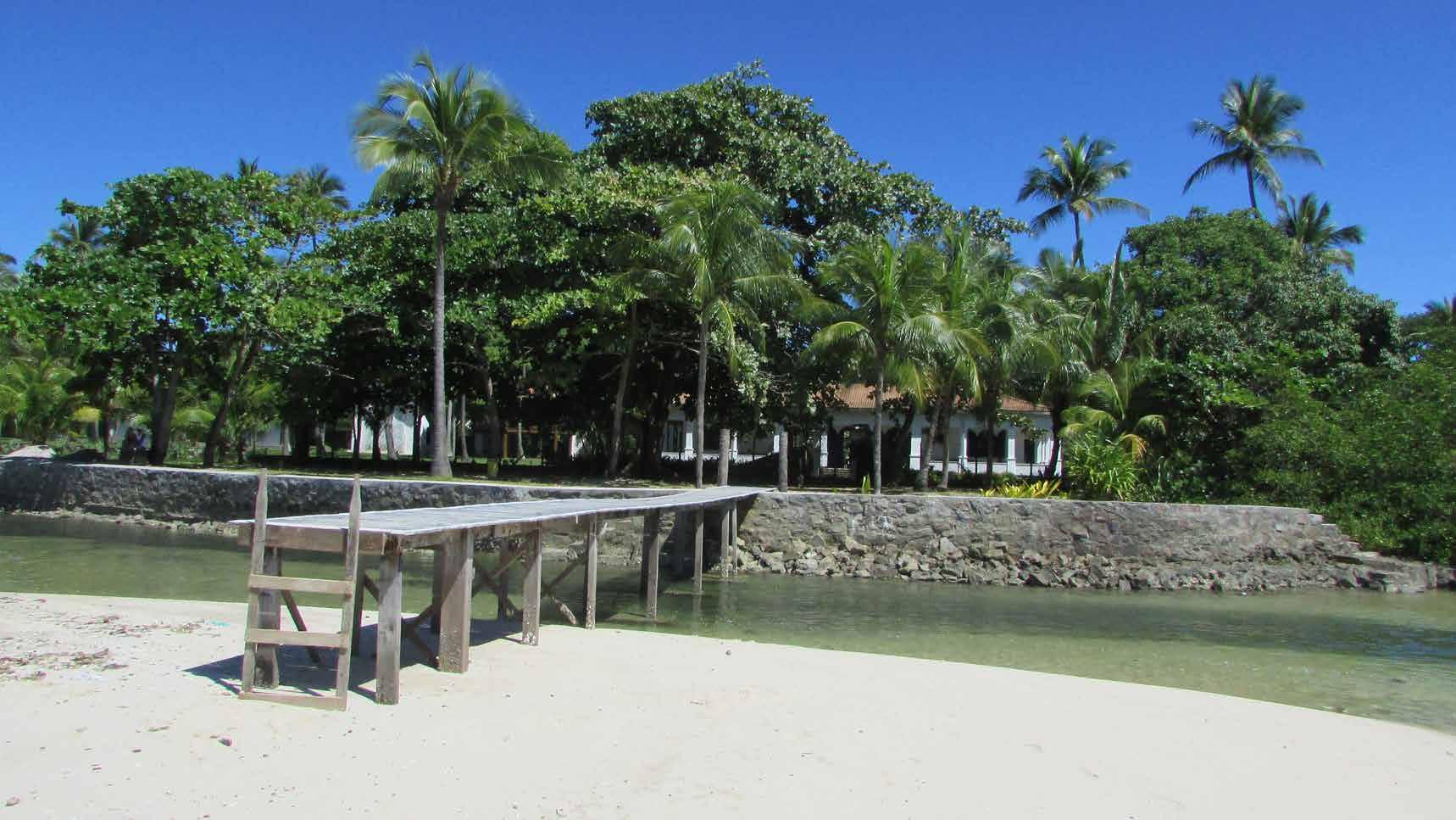
The place is so magical and calm... an atmosphere of peacefulness and energy. It just does not get better than that. These kinds of things don’t magically happen. People build them and make them happen.
Laurie Anderson , multi-media artist (USA 2016)
Sacatar Foundation USA PO Box 2612 Pasadena CA 91102-2612 USA Instituto Sacatar BRASIL Rua da Alegria,10 Itaparica BA 44460-000 BRASIL Tel: ++55 71 3631 1834 | info@sacatar.org | www.sacatar.org http://sacatar.org/
Photo by Taylor Van Horne 2017
DRONE IMAGE

























































































